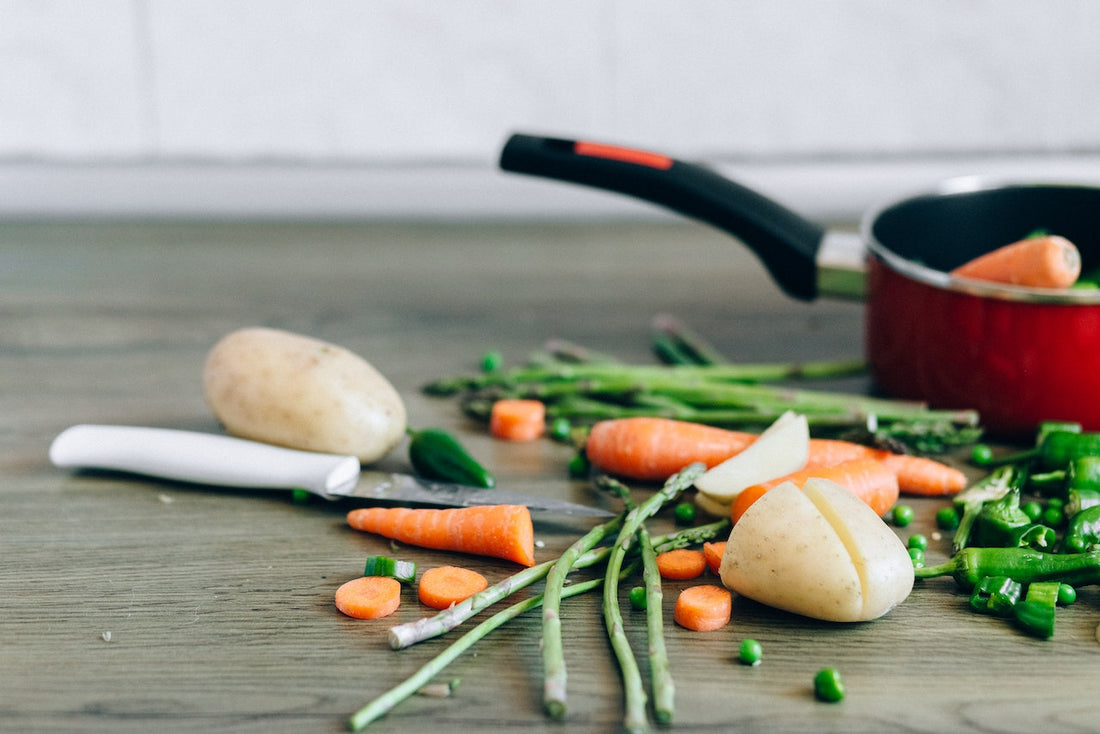As pet owners, we want the best for our furry companions, and that includes providing them with nutritious and wholesome meals. While commercial dog food is convenient, making your dog's food from scratch can be a rewarding and healthier alternative. In this article, we will explore the benefits of homemade dog food, the essential ingredients, and a step-by-step guide on how to prepare balanced and delicious meals for your four-legged friend.
Benefits of Homemade Dog Food
Before diving into the process of making homemade dog food, let's discuss why it's a worthwhile endeavor:
Quality Control: When you prepare your dog's food, you have complete control over the ingredients, ensuring that your pup gets the best nutrition possible. You can avoid fillers, artificial additives, and preservatives often found in commercial dog food.
Tailored Nutrition: Homemade meals allow you to customize your dog's diet to meet their specific needs. Whether your pup has allergies, sensitivities, or dietary preferences, you can cater to them with a carefully crafted menu.
Improved Digestion: Many dogs experience digestive issues when consuming commercial dog food. Preparing homemade meals can help alleviate these problems, as you can choose ingredients that are gentle on your dog's stomach.
Enhanced Flavor: Homemade dog food is often more palatable and flavorful for your pet. This can be especially beneficial for picky eaters or dogs with reduced appetites.
Closer Bond: Preparing your dog's meals can strengthen the bond between you and your furry friend. It's an act of love and care that your dog will surely appreciate.
Now that we've highlighted the advantages of homemade dog food, let's move on to the essential ingredients and guidelines for crafting a balanced meal.
Essential Ingredients
To create well-balanced homemade dog food, it's crucial to include the following components in each meal:
Protein Source: The foundation of your dog's diet should be a high-quality protein source. This can include lean meats like chicken, turkey, beef, or fish. Make sure to remove bones, skin, and excess fat, as these can be harmful to your dog.
Vegetables: Vegetables provide essential vitamins and minerals. Common options include carrots, peas, green beans, and sweet potatoes. These should be cooked to improve digestibility.
Grains or Carbohydrates: Grains like rice or oats, or carbohydrates like sweet potatoes and quinoa, can provide energy for your dog. They should be cooked and added in moderation.
Healthy Fats: Incorporate healthy fats like olive oil or flaxseed oil for skin and coat health. These fats are essential for your dog's well-being.
Calcium: To maintain strong bones, include a calcium source like crushed eggshells or a canine calcium supplement. Consult with your vet for the appropriate amount.
Fruits: While fruits should be given sparingly due to their sugar content, small amounts of fruits like apples or blueberries can add flavor and some nutrients to your dog's meal.
Supplements: Depending on your dog's specific needs, your vet may recommend additional supplements such as vitamins or minerals.
Step-by-Step Guide to Homemade Dog Food
Now that we've covered the essential ingredients, let's walk through the process of making homemade dog food:
Step 1: Consult Your Veterinarian
Before making any changes to your dog's diet, consult your veterinarian. They can provide guidance on your dog's specific nutritional requirements and any dietary restrictions or allergies.
Step 2: Determine Portion Sizes
Your veterinarian can help you calculate the appropriate portion sizes based on your dog's age, size, activity level, and health status. This is crucial to ensure your dog receives the right amount of calories and nutrients.
Step 3: Choose Protein Sources
Select lean protein sources like chicken, beef, turkey, or fish. Remove any bones, skin, and excess fat. Cook the meat thoroughly to eliminate any potential pathogens.
Step 4: Prepare Vegetables and Grains
Chop vegetables into small, digestible pieces and cook them until they are soft. Cook grains like rice or oats separately.
Step 5: Mix Ingredients
In a large bowl, combine the cooked protein, vegetables, and grains. Add a source of healthy fats, such as olive oil, and mix well.
Step 6: Add Supplements
If your vet recommends any supplements, now is the time to add them to the mixture. Make sure to follow your vet's instructions regarding dosage.
Step 7: Store and Serve
Divide the prepared dog food into daily portions and store them in airtight containers in the refrigerator. Reheat each serving before feeding it to your dog. Be cautious not to serve food that's too hot.
Step 8: Monitor Your Dog's Health
After transitioning your dog to homemade food, monitor their health and well-being closely. Keep an eye on their weight, energy levels, and digestion. If you notice any issues, consult your vet for adjustments.
Tips for Success
Variety: Rotate protein sources and vegetables to ensure your dog receives a wide range of nutrients.
Avoid Harmful Foods: Never include ingredients like onions, garlic, grapes, raisins, chocolate, or caffeine in your dog's meals, as these can be toxic to dogs.
Hydration: Always provide fresh water for your dog to stay hydrated.
Gradual Transition: If you're switching from commercial dog food to homemade meals, do it gradually over several days to prevent digestive upset.
Be Patient: Homemade dog food preparation requires time and effort, but the health benefits for your furry friend are worth it.
Conclusion
Making your dog's food from scratch can be a rewarding way to provide them with nutritious and tailored meals. By following the guidelines in this article and consulting your veterinarian, you can ensure that your beloved pet receives the best possible nutrition. Remember that each dog is unique, so it's essential to adjust their diet based on their specific needs and preferences. With patience and dedication, you can enhance your dog's overall health and happiness through homemade meals made with love.

